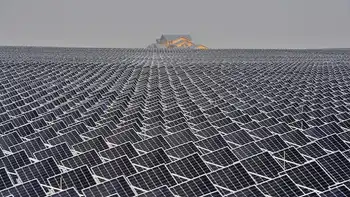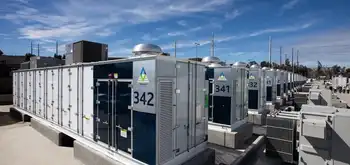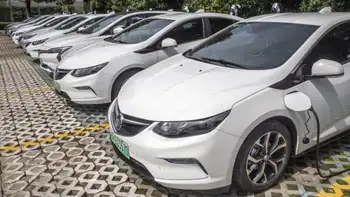Power plants could store carbon dioxide under North Sea
By Telegraph
Substation Relay Protection Training
Our customized live online or in‑person group training can be delivered to your staff at your location.

- Live Online
- 12 hours Instructor-led
- Group Training Available
The development of the technique, titled carbon capture and storage (CCS), has the potential to support 10,000 jobs north of the Border and cut Britain's output of greenhouse gases.
The Government announced plans to establish four carbon capture demonstration projects in the UK, with Scotland expected to be involved in at least one.
The new study, titled Opportunities for CO2 Storage Around Scotland, was hailed as a "milestone" by Alex Salmond, the First Minister.
Launching the document at Edinburgh Castle, he said: "Our ambition is to become a world leader in reducing harmful emissions and producing clean, green energy as part of our contribution to tackling climate change."
Scottish Power has already announced it is hoping to start capturing carbon within five years in Scotland.
But the report, by the Scottish Executive and Scottish Centre for Carbon Storage, is the first comprehensive study of the technology in the UK and presents a site-by-site assessment of carbon dioxide storage sites.
It finds they have the capacity to store 4,600 to 46,000 million tons of CO2 in rocks beneath the Scottish waters of the North Sea.
The gas would be collected at the power stations, converted to liquid form, before being piped offshore.
Existing oil rigs, as well as new hubs, could be used to pump it into porous sandstone below the sea bed.
These are located below a harder surface of rocks which act to seal in the CO2. Some former oil and gas fields below the seabed could also be used for storage, but the study indicates some limitations surrounding this.
Stuart Haszeldine, professor of sedimentary geology at the University of Edinburgh, said it could play a "critical role" in reducing the worst effects of global warming.
"The information gathered in this study tells us where the challenges are with CO2 storage," he said.
"Now we have to take the first big steps on the path to emission reductions."
Mr Salmond has ruled out building a new generation of nuclear power stations in Scotland, with the country's existing two atomic plants coming to the end of their operational lives.
He claimed electricity generated in Scottish power stations with carbon capture technology should also be comparable in price to other green technologies.
"Scotland can be a world leader in this technology of the future," he added.
Scottish Labour said the demonstration projects were "essential" to discover the potential of carbon capture technology.
But Lewis Macdonald, the party's energy spokesman, said SNP ministers "need to recognize there is a long way to go before we can be certain CCS is technically and commercially viable.
"That is why the SNP are wrong to rule out new nuclear as an option for the future."











